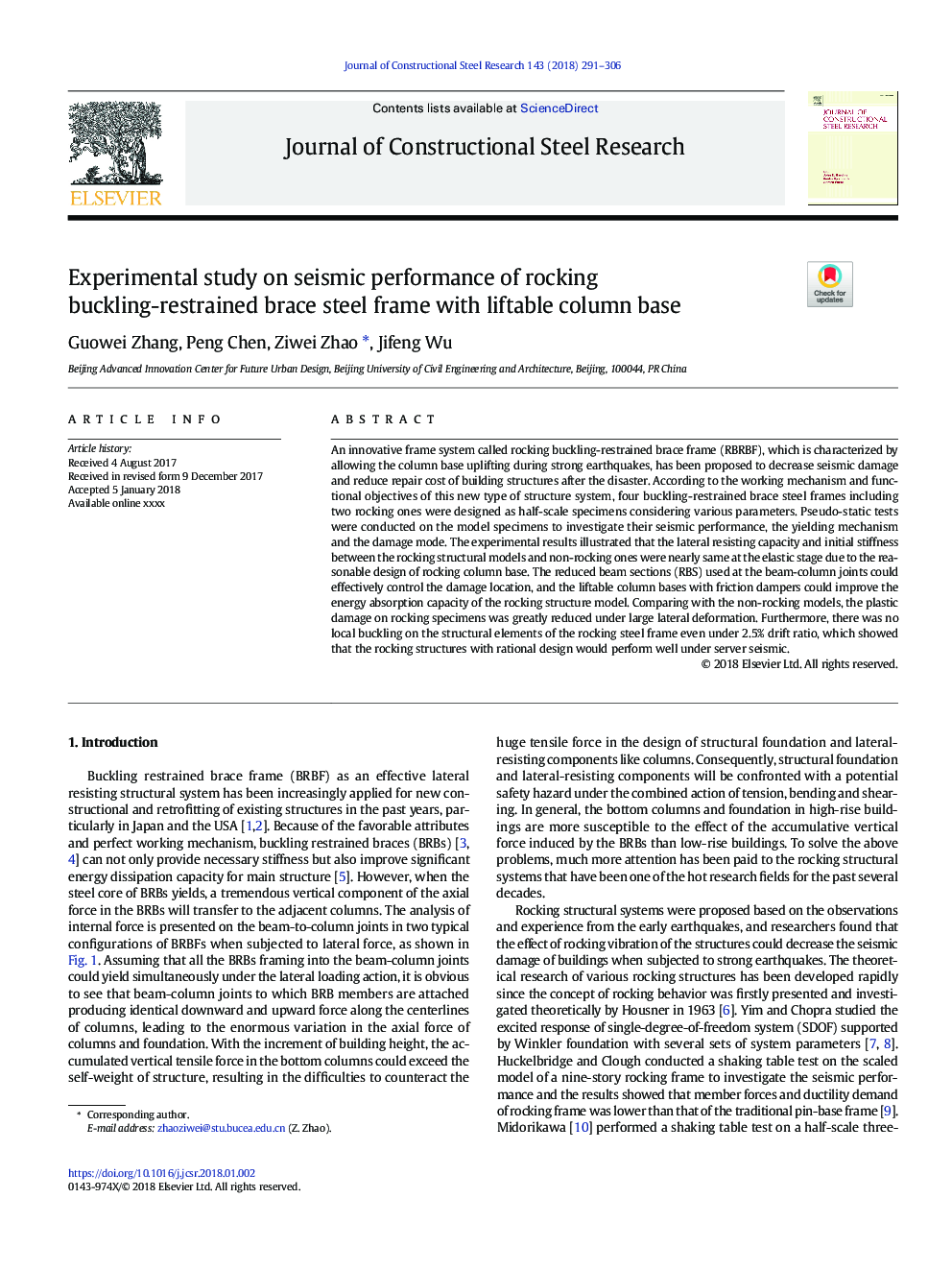| Article ID | Journal | Published Year | Pages | File Type |
|---|---|---|---|---|
| 6751026 | Journal of Constructional Steel Research | 2018 | 16 Pages |
Abstract
An innovative frame system called rocking buckling-restrained brace frame (RBRBF), which is characterized by allowing the column base uplifting during strong earthquakes, has been proposed to decrease seismic damage and reduce repair cost of building structures after the disaster. According to the working mechanism and functional objectives of this new type of structure system, four buckling-restrained brace steel frames including two rocking ones were designed as half-scale specimens considering various parameters. Pseudo-static tests were conducted on the model specimens to investigate their seismic performance, the yielding mechanism and the damage mode. The experimental results illustrated that the lateral resisting capacity and initial stiffness between the rocking structural models and non-rocking ones were nearly same at the elastic stage due to the reasonable design of rocking column base. The reduced beam sections (RBS) used at the beam-column joints could effectively control the damage location, and the liftable column bases with friction dampers could improve the energy absorption capacity of the rocking structure model. Comparing with the non-rocking models, the plastic damage on rocking specimens was greatly reduced under large lateral deformation. Furthermore, there was no local buckling on the structural elements of the rocking steel frame even under 2.5% drift ratio, which showed that the rocking structures with rational design would perform well under server seismic.
Related Topics
Physical Sciences and Engineering
Engineering
Civil and Structural Engineering
Authors
Guowei Zhang, Peng Chen, Ziwei Zhao, Jifeng Wu,
